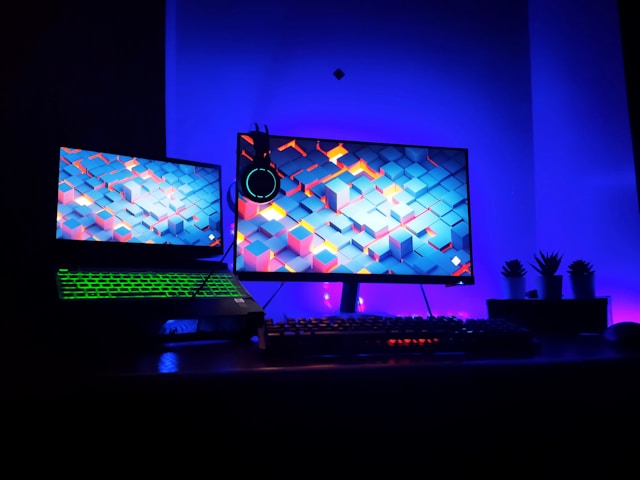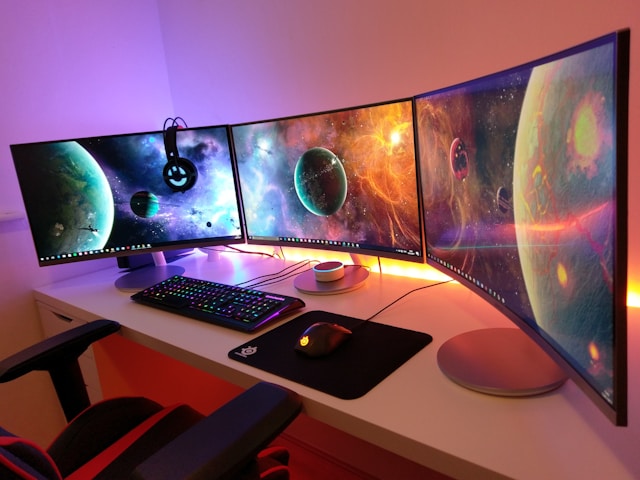With so many options available, it might seem overwhelming to find the perfect fit. By learning about essential features and specifications, you can confidently choose the right option. In this article, we’ll share essential tips on how to choose the best gaming monitor that suits your needs.
Determine Your Budget
The first step in how to choose the best gaming monitor is to determine your budget. Gaming monitors vary greatly in price, so setting a clear budget can make it easier to narrow down your choices. A higher budget typically offers better features, such as higher refresh rates and better resolutions. However, some good budget-friendly monitors deliver excellent performance. Assess your needs and find a monitor that fits within your financial plan.
Choose the Right Screen Size
Screen size is another crucial factor when considering how to choose the best gaming monitor. Larger screens can provide an immersive gaming experience, but they also require more desk space. A 24-inch to 27-inch monitor is ideal for most gamers, as it balances visibility and desk space. If you prefer an even larger display, consider a 32-inch monitor, but make sure your gaming setup can accommodate it.

Consider the Resolution
Resolution plays a significant role in the quality of your gaming visuals. Full HD is suitable for most gamers and provides good image clarity. However, if you want stunning visuals and have a powerful graphics card, consider a Quad HD or Ultra HD monitor. Look at Refresh Rates
Refresh rate is another key aspect of how to choose the best gaming monitor. A higher refresh rate results in smoother gameplay, which is especially important for fast-paced games. Most gamers prefer a refresh rate of at least 60Hz, but 144Hz or even 240Hz monitors are available for a more responsive experience. If you play competitive games, investing in a high refresh rate monitor can give you an edge.
Check Response Time
A lower response time is essential for reducing motion blur and ghosting in fast-paced games. For gaming monitors, a response time of 1ms to 5ms is ideal. When choosing a monitor, look for one with a low response time to ensure a smoother gaming experience casino en ligne en france .
Explore Panel Types
The type of panel used in a gaming monitor can affect its performance and visual quality. There are three main types: In-Plane Switching (IPS), Twisted Nematic (TN), and Vertical Alignment (VA). IPS panels offer better color accuracy and wider viewing angles, making them a great choice for immersive gaming. TN panels typically have faster response times but may sacrifice color quality. VA panels provide good contrast but may not match the performance of IPS panels. Consider what is most important to you when selecting a panel type.
Look for Adaptive Sync Technology
Adaptive sync technology helps eliminate screen tearing and stuttering during gameplay. Two popular technologies are NVIDIA’s G-Sync and AMD’s FreeSync. If you have a compatible graphics card, using a monitor with adaptive sync technology can significantly enhance your gaming experience. This feature ensures that the monitor’s refresh rate matches the frame rate of your graphics card, resulting in smoother visuals.
Check Connectivity Options
Before purchasing a monitor, make sure it has the necessary connectivity options for your gaming setup. Most gaming monitors come with HDMI and DisplayPort inputs, but you may also want USB ports for connecting peripherals. Ensure that the monitor is compatible with your gaming system and any other devices you plan to connect.
Consider Ergonomics and Design
When learning how to choose the best gaming monitor, don’t forget about ergonomics and design. An adjustable stand allows you to set the monitor at a comfortable height, reducing strain on your neck and eyes. Additionally, consider a monitor with thin bezels for a more modern look and a cleaner setup. Some monitors even come with RGB lighting, which can enhance the aesthetics of your gaming environment.
Read Reviews and Do Research
Finally, before making your final decision, read reviews and research different gaming monitors. Look for feedback from other gamers about their experiences with specific models. Online reviews can provide valuable insights into the performance, durability, and overall satisfaction of a monitor. Taking the time to gather information will help you make the best choice for your gaming needs.
Conclusion
In conclusion, choosing the best gaming monitor involves considering various factors, including budget, screen size, resolution, refresh rates, response time, panel type, adaptive sync technology, connectivity options, ergonomics, and design. By following these guidelines on how to choose the best gaming monitor, you can find a display that enhances your gaming experience and meets your needs. Take your time to evaluate your options and enjoy your gaming journey with a monitor that truly elevates your gameplay.
